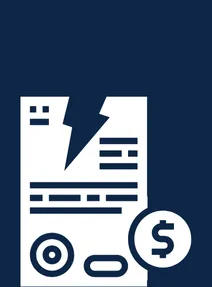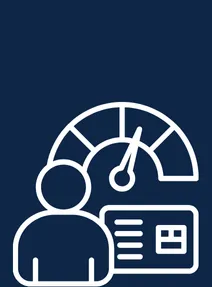What Is a Split Loan? Fixed + Variable Explained for First Home Buyers
Learn how split loans work, the pros and cons, and why they’re a popular option for Australian first home buyers. Fixed + variable home loan structure explained simply.
What Is a Split Loan? Fixed + Variable Explained for First Home Buyers
Learn how split loans work, the pros and cons, and why they’re a popular option for Australian first home buyers. Fixed + variable home loan structure explained simply.
What Is a Split Loan?
A split loan divides your home loan into two separate parts—typically one with a fixed interest rate and the other with a variable interest rate.
This setup gives you the best of both worlds:
Stability from fixed repayments
Flexibility from features like redraws or extra repayments on the variable side
Example:
Let’s say you borrow $600,000 to buy your first home. You decide to split the loan 60/40:
$360,000 is on a fixed rate for 3 years – your repayments for this part won’t change, giving you budgeting certainty.
$240,000 is on a variable rate – this part of the loan may go up or down depending on market interest rates, and you can make extra repayments or use features like redraw if your lender offers them.
This way, you get the benefit of budget certainty while still having some freedom to adjust in one loan.
Key Benefits of a Split Loan
Stability with flexibility
Part of your loan has locked-in repayments (fixed), while the other responds to market changes (variable).
Protection from rising interest rates
If rates go up, your fixed portion remains unaffected—helping with budgeting.
Access to helpful features
The variable portion may offer redraws, offset accounts, or unlimited extra repayments—depending on your lender.
Customisable to suit your goals
You choose the split ratio that works best for your financial situation and risk tolerance.
When Might a Split Loan Be a Good Option?
Consider a split loan if you:
Want predictable repayments on part of your loan
Still want flexibility to make extra payments
Prefer not to commit fully to a fixed or variable rate
Like the idea of tailoring your loan to your comfort with risk
How Much Should You Split?
There’s no one-size-fits-all answer. The best split depends on your financial goals, comfort with interest rate changes, and how much flexibility you want.
Here are some common split loan structures:
70% Fixed / 30% Variable – More stability
50% Fixed / 50% Variable – Balanced choice
30% Fixed / 70% Variable – More flexibility
Before deciding, it’s a good idea to speak with your mortgage broker or lender. They can help you choose a split that matches your income, risk level, and long-term plans.
How to Set Up a Split Loan
During application: Choose the split when you first apply for your home loan.
After settlement: You can request to split your existing variable loan later.
At fixed rate expiry: Reassess and restructure your loan based on your new needs.
A mortgage broker or lender can help you understand the timing, structure, and any costs involved.
⚠️Things to Watch Out For
Extra fees – Some lenders charge setup or account-keeping fees for split loans
Fixed rate restrictions – Limits on extra repayments or break fees may apply
Different terms – Each portion may have separate conditions, so read the fine print
Final Thought
The right loan structure can help you save money, reduce financial stress, and give you more control over your home buying journey.
Keep learning, ask questions, and make informed decisions—because smart buyers make strong homeowners.
What Is a Split Loan?
A split loan divides your home loan into two separate parts—typically one with a fixed interest rate and the other with a variable interest rate.
This setup gives you the best of both worlds:
Stability from fixed repayments
Flexibility from features like redraws or extra repayments on the variable side
Example:
Let’s say you borrow $600,000 to buy your first home. You decide to split the loan 60/40:
$360,000 is on a fixed rate for 3 years – your repayments for this part won’t change, giving you budgeting certainty.
$240,000 is on a variable rate – this part of the loan may go up or down depending on market interest rates, and you can make extra repayments or use features like redraw if your lender offers them.
This way, you get the benefit of budget certainty while still having some freedom to adjust in one loan.
Key Benefits of a Split Loan
Stability with flexibility
Part of your loan has locked-in repayments (fixed), while the other responds to market changes (variable).
Protection from rising interest rates
If rates go up, your fixed portion remains unaffected—helping with budgeting.
Access to helpful features
The variable portion may offer redraws, offset accounts, or unlimited extra repayments—depending on your lender.
Customisable to suit your goals
You choose the split ratio that works best for your financial situation and risk tolerance.
When Might a Split Loan Be a Good Option?
Consider a split loan if you:
Want predictable repayments on part of your loan
Still want flexibility to make extra payments
Prefer not to commit fully to a fixed or variable rate
Like the idea of tailoring your loan to your comfort with risk
How Much Should You Split?
There’s no one-size-fits-all answer. The best split depends on your financial goals, comfort with interest rate changes, and how much flexibility you want.
Here are some common split loan structures:
70% Fixed / 30% Variable – More stability
50% Fixed / 50% Variable – Balanced choice
30% Fixed / 70% Variable – More flexibility
Before deciding, it’s a good idea to speak with your mortgage broker or lender. They can help you choose a split that matches your income, risk level, and long-term plans.
How to Set Up a Split Loan
During application: Choose the split when you first apply for your home loan.
After settlement: You can request to split your existing variable loan later.
At fixed rate expiry: Reassess and restructure your loan based on your new needs.
A mortgage broker or lender can help you understand the timing, structure, and any costs involved.
⚠️Things to Watch Out For
Extra fees – Some lenders charge setup or account-keeping fees for split loans
Fixed rate restrictions – Limits on extra repayments or break fees may apply
Different terms – Each portion may have separate conditions, so read the fine print
Final Thought
The right loan structure can help you save money, reduce financial stress, and give you more control over your home buying journey.
Keep learning, ask questions, and make informed decisions—because smart buyers make strong homeowners.
Related Topics
A break fee (or break cost) is a charge you may incur for ending a fixed-rate loan before the agreed term.
By linking a transaction account to your home loan, an offset account helps reduce the interest charged on your loan balance.
Lenders may discount parts of your income—like bonuses or casual earnings—when assessing your borrowing power. This is known as “income shredding” or an “income haircut.”
The cooling-off period is a brief timeframe after signing a property contract when buyers can cancel the deal, often with little or no penalty.
Discover the five key factors lenders evaluate when assessing loan applications and learn how each plays a role in securing mortgage approval.
A high LVR could mean extra costs, while a low LVR can save you thousands. Find out why lenders care so much about this number.
Related Topics
A break fee (or break cost) is a charge you may incur for ending a fixed-rate loan before the agreed term.
By linking a transaction account to your home loan, an offset account helps reduce the interest charged on your loan balance.
Lenders may discount parts of your income—like bonuses or casual earnings—when assessing your borrowing power. This is known as “income shredding” or an “income haircut.”
The cooling-off period is a brief timeframe after signing a property contract when buyers can cancel the deal, often with little or no penalty.
Discover the five key factors lenders evaluate when assessing loan applications and learn how each plays a role in securing mortgage approval.
A high LVR could mean extra costs, while a low LVR can save you thousands. Find out why lenders care so much about this number.
© 2025 Estate Seeker.com.au - All Rights Reserved. Content on this site is for educational purposes only.
Always consult with a professional before making any investment decisions.









